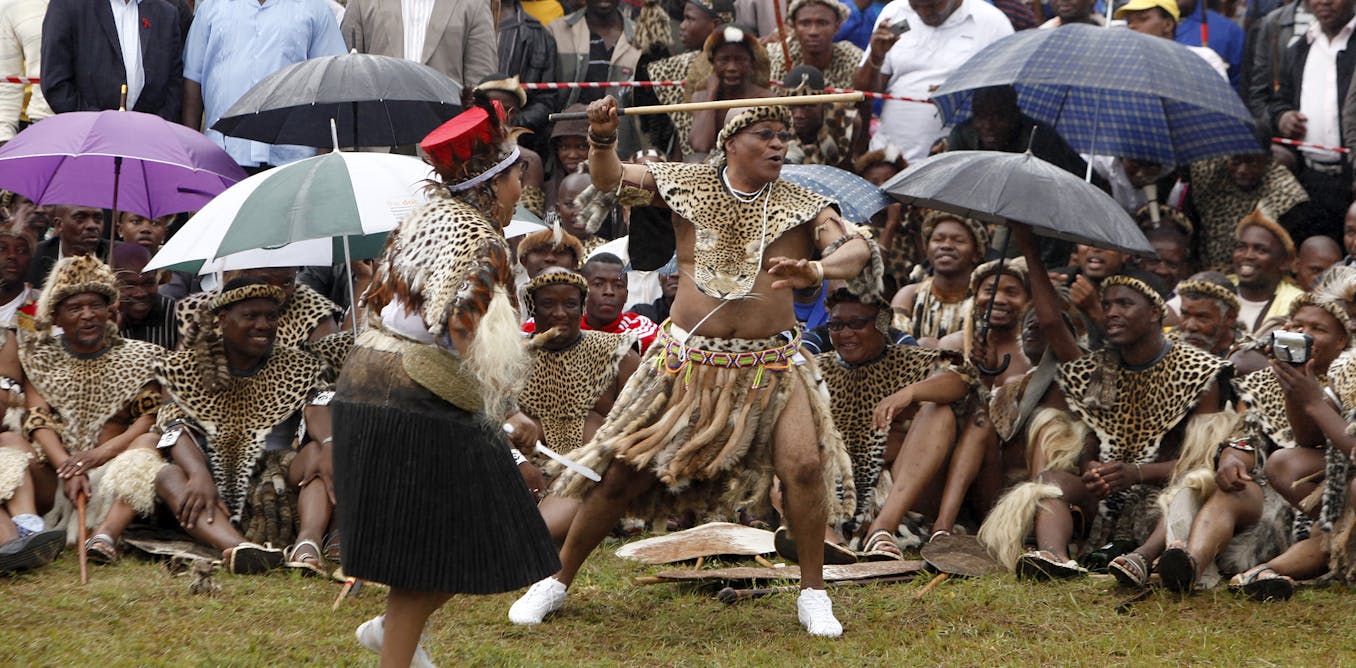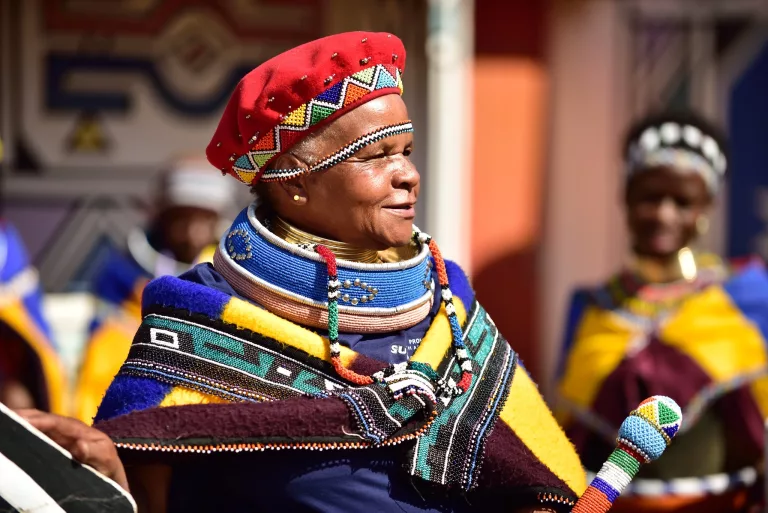South African Culture Today Things To Know Before You Buy
South African Culture Today Things To Know Before You Buy
Blog Article
Rumored Buzz on South African Culture Today
Table of ContentsGetting The South African Culture Today To WorkNot known Facts About South African Culture TodayIndicators on South African Culture Today You Should KnowHow South African Culture Today can Save You Time, Stress, and Money.The Best Strategy To Use For South African Culture TodayFacts About South African Culture Today Uncovered
An issue of relevance in Zambian villages is the passing away of liked ones. All participants of the village placed cash, time and effort together for the burial of the deceased.Throughout the grieving period; men stay outside your home and the females remain inside your home of the deceased. After discussing the dead, the town walks to the location of burial to state their last goodbyes. Music and dance is an extremely important aspect of the Zambian culture. The various tribal systems have their own dance forms; nevertheless, makishi prevails among all tribes.
South African Culture Today Fundamentals Explained
When it concerns songs, drums are used one of the most, with a range of drumming ceremonies. In Zambia, majority of the individuals are Christian; Protestant and Roman Catholic. There are small teams of Muslims and Hindus, with the remainder complying with regional native tribal ideas.

South African heritage and society is greatly varied, and includes lots of various teams of people who each have their own customs and beliefs. Having such a variety of people and cultures is what makes South Africa so special. In truth feeling of the expression, we are a rainbow country.
Making it the 7th on the list of countries with the most Portuguese individuals in it outside of Portugal. Portuguese is not only a society, however it is additionally a language and a nationality. Portuguese individuals stem from the country of Portugal in Europe, nevertheless, due to Portugal (like several various other nations in Europe) checking out the world and overcoming various other nations throughout the 15th 20th centuries, South Africa has what we call Portuguese South African's living in it.
Little Known Questions About South African Culture Today.
Among the prominent functions of the topography is a plateau that covers virtually two thirds of the facility of the country. The plateau facility increases toward the southeast, where it culminates in the Drakensberg range, component of an escarpment that divides the plateau from the coastal locations. The Drakensburg includes Sparkling wine Castle, the greatest peak in the country.
The area north of the Witwatersrand, called the bushveld, slopes downward from eastern to west toward the Limpopo River, which creates the worldwide boundary. The western area of the plateau, the middleveld, likewise comes down towards the west and differs in elevation in between the highveld and bushveld. In between the Drakensburg and the eastern and southern coast, the land comes down to the sea.
Nearer the shore there is a low-lying plain called the eastern lowveld. Southwest of the plateau the nation becomes progressively extra arid, offering method to the hostile desert of the Great Karroo, verged on the east by the reduced, better sprinkled plateau of the Little Karroo. Separating the completely dry southerly inside from the sandy littoral of the southern shore and West Cape is an additional array, the Langeberg.
Get This Report on South African Culture Today
The nation's racially, ethnically, and politically split background has generated national and subnational icons that still operate as symbols of the nation, and others icons that are accepted only by specific groups. The monuments to white inhabitant occupation and political dominance, such as the Afrikaner Voortrekker ("pioneer") Monolith in Pretoria and the Rhodes Monolith honoring the British colonial empire home builder and Cape head of state Cecil Rhodes, remain sectarian signs.
The initial modern occupants were the San ("bushman") hunter-gatherers and the Khoi ("Hottentot") individuals, who herded livestock (South African culture today). The San may have been present for thousands of years and left proof of their visibility in hundreds of ancient cave paintings ("rock art"). Bantu-speaking clans that were the forefathers of the Nguni (today's amaZulu, amaXhosa, amaSwazi, and vaTsonga peoples) and Tswana-Sotho language groups (today's Batswana and Southern and Northern Basotho) moved below east Africa as early as the fifteenth century

The 2 former republics of the Orange Free State and Transvaal (South African Republic) were established by Afrikaner inhabitants who beat and dispossessed the Basotho and Batswana. Lesotho would certainly have been forcibly incorporated right into the Orange Free State without the expansion of British security in 1869. The supreme unification of the nation resulted from the South African Battle (18991902) in between the British and both Afrikaner republics, which reduced the nation to wreck at the start of the twentieth century.
Afrikaners historically considered themselves the only real South Africans and, while giving full citizenship to all residents of European descent, refuted that standing to individuals of shade until the democratic change of 1994. British South Africans keep a feeling of social and social connection to Great Britain without damaging their identity as South Africans.
Some Known Details About South African Culture Today
The variety and fragmentation within ethnic groups and the equilibrium of tensions between those groups during the twentieth century stopped interethnic civil conflict. While intergroup tensions over resources, entitlements, and political dominance continue to be, those problems are as most likely to match Zulu versus Zulu as Zulu versus Xhosa or African versus Afrikaner.
From colonial Discover More India, British vendors and administrators brought the rounded steel decorative roofing systems and slender lace job columns that still represent the verandas of homes in towns and cities throughout the nation. Residences of prayer add an important architectural aspect also in the tiniest communities. Along with the skyrocketing steeples and traditional stonework of Afrikaans Dutch Reformed churches, Anglican churches, synagogues, mosques, and Hindu temples supply range to the religious architectural scene.

Butchering and the brewing of traditional cereal beer are crucial in securing the engagement and goodwill of the forefathers who are taken into consideration the guardians of good luck, success, and well-being. Indian areas maintain their native cooking visit here practices and apply them on Islamic and Hindu ritual and ceremonial celebrations. Afrikaners and Coloured people gather at weekends and unique occasions at multifamily barbeques called braais, where area bonds are strengthened.
Since this was the main economic business of both black Africans and white colonists, dispute in between those teams centered on the ownership of grazing land and animals. In 1867, the largest ruby down payments worldwide were discovered at Kimberley in the west central area. The wide range from those fields assisted fund the exploitation of the greatest gold reef in the globe, which was uncovered on the Witwatersrand in 1886.
The Definitive Guide to South African Culture Today
This led to misconceptions and calculated misrepresentation in the transactions of white settlers and federal government authorities with African principals during the colonial duration (South African culture today). In the facility of African books, some elements of communal and primarily "tribal depend on" land tenure were protected, and also in white backwoods, kinds of common tenure were still exercised in areas with African communities
After the autonomous makeover This Site of 1994, programs for land restitution, redistribution, and reform were set up, but progression has actually been slow-moving. The white minority still manages eighty percent of the land. Following farming land invasions in Zimbabwe, the Division of Land Matters has vowed to speed up land redistribution.
Report this page